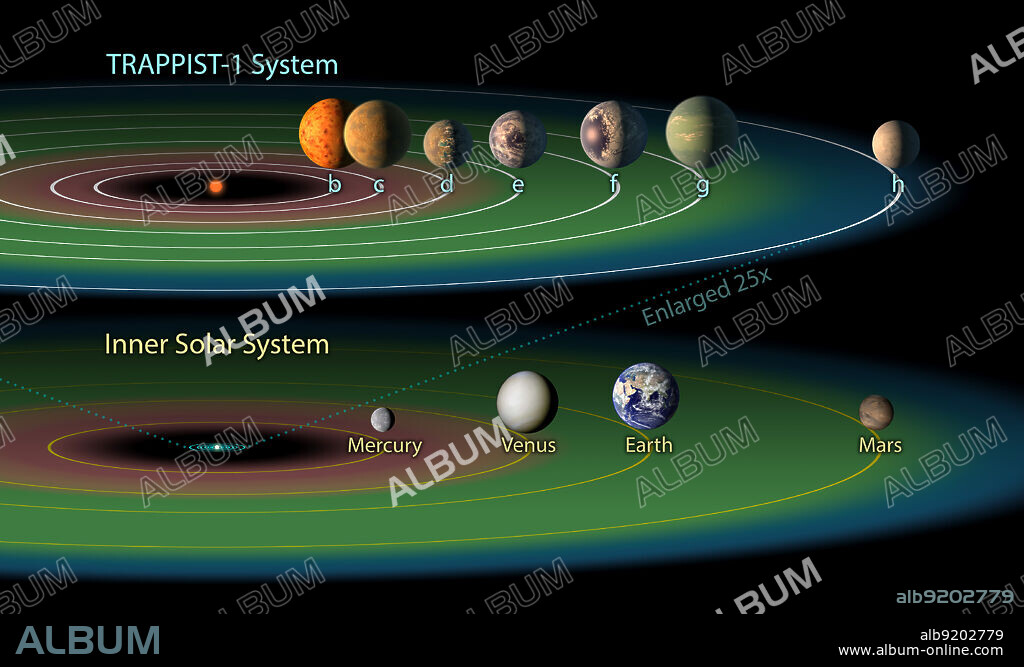alb9202779
TRAPPIST-1 Habitable Zone

|
Ajouter à une autre Lightbox |
|
Ajouter à une autre Lightbox |



Avez-vous déjà un compte? S'identifier
Vous n'avez pas de compte ? S'inscrire
Acheter cette image

Titre:
TRAPPIST-1 Habitable Zone
Légende:
Voir la traduction automatique
The TRAPPIST-1 system contains a total of seven planets, all around the size of Earth. Three of them -- TRAPPIST-1e, f and g -- dwell in their star's so-called 'habitable zone'. The habitable zone, or Goldilocks zone, is a band around every star (shown here in green) where astronomers have calculated that temperatures are just right -- not too hot, not too cold -- for liquid water to pool on the surface of an Earth-like world. While TRAPPIST-1b, c and d are too close to be in the system's likely habitable zone, and TRAPPIST-1h is too far away, the planets' discoverers say more optimistic scenarios could allow any or all of the planets to harbor liquid water. In particular, the strikingly small orbits of these worlds make it likely that most, if not all of them, perpetually show the same face to their star, the way our moon always shows the same face to the Earth. This would result in an extreme range of temperatures from the day to night sides, allowing for situations not factored into the traditional habitable zone definition. The illustrations shown for the various planets depict a range of possible scenarios of what they could look like.
Crédit:
Album / NASA/JPL-Caltech / Science Source
Autorisations:
Modèle: Non - Propriété: Non
Questions sur les droits?
Questions sur les droits?
Taille de l'image:
Pas disponible
Taille d'impression:
Pas disponible
Mots clés:
ARTISTE • ARTISTEL • ARTSTE • ASTRONOMIE • ASTRONOMIE: PLANETES • CARTE • COSMOS • EXPLORATION • GRAPHIQUE • ILLUSTRATION • MONSTRE NAIN • NAIN • OBSERVATOIRE • ORBITE • PLANETARIUM • PLANETE • PLANÈTES • SCIENCE: ASTRONOMIE
 Pinterest
Pinterest Twitter
Twitter Facebook
Facebook Copier le lien
Copier le lien Email
Email
